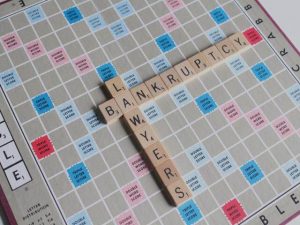Content Reviewed by: Dave Gormley •
March.14.2020 Vertified Content
Mar 14, 2020 | Read Time: 6 minutes
Even if you have been keeping up with your bills, now is the time to do some emergency budgeting. Nobody knows how bad this will get.
(Things have been changing fast. This post was published on March 14th. Not even a week later bars and malls were closed. Now the problem is even bigger. Unemployment numbers are skyrocketing. But the same budgeting concepts apply.)
While the headlines focus on the stock market, the airlines, people stuck on cruise ships and sports events being cancelled, I think of my clients who are trying to survive the gig economy. I mean people working a second job, or multiple part time jobs. I mean that person handing out samples at Walmart.
As a bankruptcy lawyer in Southern Maryland I am often meeting with people who are living paycheck to paycheck.
If you are someone who has been barely keeping up with your bills by working a part time job, you may be fearful of the economic effects of the coronavirus. The part time server at National Harbor will probably be told to not bother coming in when business is down. Many of those people who were serving food and drinks at the Wizards game were probably counting on that next check to make rent. Now it is gone.
These types of jobs don’t have the option of working from home. You cannot replace that income with unemployment. What about all the people who are missing time from work because they can’t find daycare now that schools are closed?
If you are in danger of falling behind on your bills, now is the time to figure out your options and do some emergency budgeting.
Step One: Figure Out Your Income
First you need to figure out your income and assess your finances. Take a look at what you have in your bank account. This is going to be your primary income until your next paycheck.
If you are expecting a State tax refund, get your tax return filed as soon as possible to add to that number. You should also count the stimulus check that you should be getting from the federal government as part of your income. Just make sure to figure out how soon that should arrive.
Depending on your situation, you may be able to apply for unemployment. Part of the Federal Stimulus package expanded who is able to get unemployment. Don’t assume you aren’t eligible.
Part of the stimulus also provided for enhanced unemployment. This a temporary benefit of $600 per week on top of regular unemployment. If you have been laid off you may have more income coming than you think. Again, you will have to read up on how quick that might arrive.
While looking at your bank account, try to ignore your lines of credit. You want to try and come up with a plan that doesn’t involve incurring any debt on credit cards or lines of credit.
Also, ignore your TSP or 401k Retirement Plan. You don’t want to access these funds unless there is no other alternative. If you ever get to the point where you think you need to access these funds, come talk to us first. Tapping this money is rarely a good idea.
Step Two: Develop Your Emergency Budget
After you determine your income, the next step is to figure out how to make this money last until your next paycheck. Look at your expenses and prioritize them. Remember, this is not a normal budget. This is an emergency budget to get you through an emergency.
This means guessing as to how long it will be until your income and expenses are back to normal. If you have the savings, come up with a 30-day plan. If not, at least look at a 21-day plan.
How to Figure Out Your Emergency Budget
The first thing to do is to figure out what bills you have coming due in the next 30 days. Now let’s figure out how to prioritize those bills.
Here is the order we came up with. Think about whether or not this order makes sense for you, or if you should shuffle the order of some of these items:
- Groceries
- Transportation (gas in your tank or public transportation)
- Rent
- Car Insurance
- Car payment
- Utilities
- Mortgage Payment
- Credit Cards
Make sure you have enough money for food. If this is all you have money for, everything else on the list will have to wait.
Don’t forget gas money. For most people in Southern Maryland, you need to have gas money to get to work and to get to the store to buy groceries. If you can walk to the store, this may move further down the list.
Normally making your mortgage payment is your number one priority. However, in this situation, this may not make sense.
In Maryland, it takes over 4 months for your house to go to foreclosure. Depending on your circumstances, it may make sense to put your mortgage payment further down the list than your utilities and car payment. Check out our Free Legal Guide to Foreclosure to learn more.
If you are renting, eviction can happen a lot faster and it should be further up the list.
For most people, cable and internet would be way down the list. However, if you telecommute, you may want to move your internet service bill a little higher on the list. Part of what has me thinking about this are the steps we have been taking so our employees can work from home. We are now set up so we can offer consultation by video conference as well as in person or by phone. That now becomes a business necessity – not just entertainment.
If you are missing work because you are having to self-quarantine because you, a family member, or coworker may have been exposed, these same prioritizing rules apply.
Step Three: Keep in Touch with Your Creditors
If you do not have enough money to pay all your bills for the next 30 days, call your creditors and let them know. Make sure they understand why you are behind and that you intend to pay once you get back to work.
The creditors have a lot of debtors in the same situation, and they may back off collection efforts until this is over. No matter what they tell you, it doesn’t hurt to try this tactic. They may say no, but it doesn’t hurt to ask.
If this crisis passes and you are back to work, you may be able to catch up. If you aren’t able to catch up, or if this crisis lasts a bit longer than we hope, then you need to learn and consider your options. Yes. You do have options.
Know Your Options
If you, or someone you know is in this tough situation, Southern Maryland Law can schedule a consultation to discuss your options. You should at least figure out all of your options before you make any decisions about how to handle your financial situation.
If the airlines and hotels can look at their options to renegotiate their loans, or file a Chapter 11 bankruptcy, why can’t you? Don’t spend weeks losing sleep and ignoring phone calls because you don’t know when your income and expenses will get back to normal.
If the creditors won’t work with you, you do have options. You can file a Chapter 13 Bankruptcy and get a Court Ordered payment plan. In some situations you can file a Chapter 7 Bankruptcy and get many of your unsecured debts wiped out. You need to at least figure out if these options are right for you.
See our Bankruptcy Legal Guide for more information on your bankruptcy options. And then call us for a free consultation with no obligation.
During the consultation, we will discuss how to budget for a temporary drop in income, your options for avoiding bankruptcy, and your bankruptcy options. We will also talk about things you shouldn’t do (See our post Trying to Avoid Bankruptcy? 5 Big Mistakes You Could Be Making.)
You might be surprised how much better you sleep knowing the options you have to deal with your financial crisis.
Contact us today for a consultation
Want to know more? Discover what you need to know about bankruptcy in Maryland. Click here to see our Free Legal Guide to Maryland bankruptcy cases and get answers to your questions today.
Know your options. Be informed. Protect yourself.
Need a bankruptcy lawyer? Please contact us for a consultation today if you need a Maryland bankruptcy lawyer for your bankruptcy case.
Like our blog? Subscribe to our email newsletter and stay informed!









